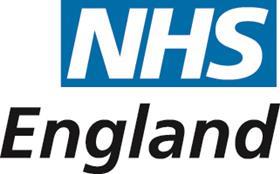Jon Rouse on the renewed national emphasis on children and young people’s health, and how Greater Manchester is working specifically towards it
A welcome and striking feature of the NHS long-term plan is its focus on children and young people. The plan squarely recognises that enabling children to have the best possible start in life is essential not only to them but also to the NHS in terms of it future sustainability.
In association with
Integrated care, based on the principles of prevention and early intervention, is just as important for children and young people as it is for other cohorts, such as older people or adults with complex lifestyles.
Drawing on examples of best practice, Greater Manchester has been building our health offer for children and young people. We created a children’s health and wellbeing board with a broad church of system leaders (going well beyond the NHS) and parent carers. We undertook extensive engagement with children and young people and reflected on our population needs using the best available evidence.
A single framework for action
This led to the development of a single framework for action with 10 agreed priorities and a promise to make early and rapid progress on three of them – reducing avoidable admissions for children and young people with common conditions, improving mental health and ensuring a comprehensive early years’ offer.
On a broader population health canvas, it means that the NHS must have a voice into policies and practices that have an impact on children and young people’s health. This includes issues such as clean air, urban design, welfare reform, family homelessness and food poverty
At the core of our refreshed model is providing integrated care for our most vulnerable children and young people, using the same place-based model we use with adult cohorts. This means targeted identification of those in need and then multidisciplinary support for that young person and their family. We are currently testing models in Rochdale, Oldham and Salford to understand their relative effectiveness.
The commitment to an integrated model of care is a challenge to our commissioning system. We, like many places in England, have made good progress towards integrating commissioning for adults, including joining up governance, pooling budgets and sharing risk. However, this is much less developed for children and young people.
Indeed, it is a frequent refrain from OFSTED inspections, particularly on special educational needs, of a lack of joined-up commissioning between the local authority and clinical commissioning group. This is partly because it is hard, particularly in a time of austerity.
Local authorities are focused on meeting a very strict set of statutory requirements and there may be difficulty for both local authorities and CCGs in disaggregating and combining budgets. However, we perhaps have a tendency to find excuses when separation is not in the best interests of the children and young people themselves.
Once a local partnership has agreed shared target outcomes, there are at least three types of integration that are relevant and need attention. The first is the joining up of services around children and young people with complex and long-term needs in a way that places maximum control in the hands of the carers and, where possible, the young person themselves.
The second is the integration of physical and mental health services. And the third is vertical, creating seamless pathways of care between primary, secondary and tertiary services, so that scarce expertise is deployed to maximum effect through the system of care and that care is provided as close to home as possible.
New realms
If we are to achieve this level of integration, then it takes the NHS into new realms in terms of relationships. How many CCG or trust chief executives have their local multiacademy trust chief executives and local authority directors of education on speed dial in terms of the criticality of that working relationship?
How many are contributing to policies and practice on schools exclusions for example, and yet we know that the treatment of this cohort is pivotal to future behaviours, including offending patterns, that will become a cost burden on the NHS as well as other public services.
On a broader population health canvas, it means that the NHS must have a voice into policies and practices that have an impact on children and young people’s health. This includes issues such as clean air, urban design, welfare reform, family homelessness and food poverty.
In Greater Manchester, we are fortunate that through the Mayor’s Reform Board, not only do we have a seat at the table to bring forward evidence and express our views, but we are also expected to be part of the solution as well.
The renewed national emphasis on children and young people’s health and wellbeing is a cause for encouragement. Every integrated care system will now need to rise to the challenge. In Greater Manchester, we are absolutely determined to improve the health of our young people and in doing so unlock their full life potential.





























